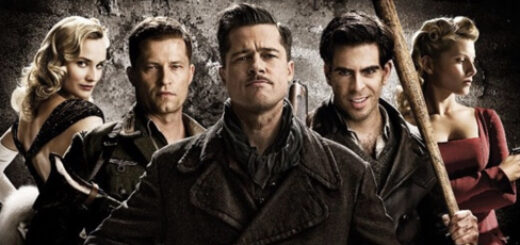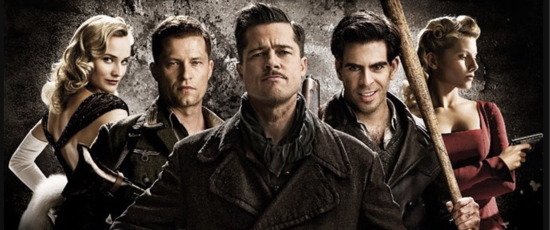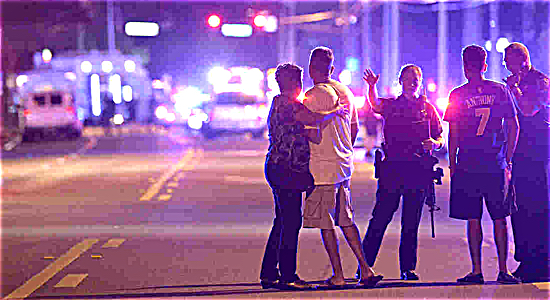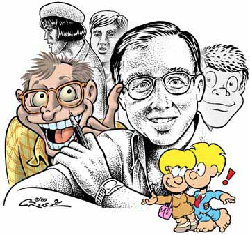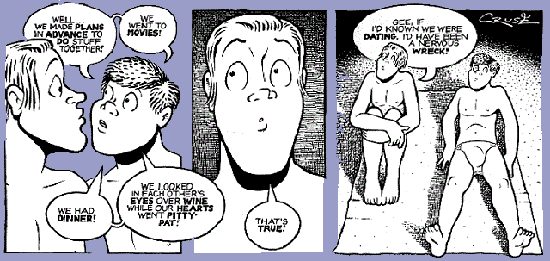Martha Thomases: Gifts For People With Brains
I hope you had a lovely Thanksgiving yesterday, and that your conversations with your friends and family were both peaceful and joyous. In my experience, the tryptophan in the turkey makes everyone so sleepy that noisy arguments require too much energy.
Today, Black Friday, is the official start of the holiday shopping season. With luck you are still enjoying the warm glow of gratitude from yesterday’s holiday, and we can use these emotions to consider your holiday shopping list.
I, for one, am grateful to live in a country that defends freedom of speech. Even hate speech. I don’t like neo-Nazis or what they say (and for even more video, check out this link). However, we know who a bunch of these people are now, and we can defend ourselves https://www.splcenter.org.
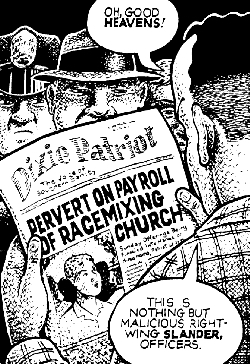 You know another great thing about Nazis? They make excellent bad guys. A book or movie can have the most conflicted protagonist imaginable, but when he or she is fighting Nazis, you know who is the hero. It’s one of my favorite things about Inglourious Basterds, which remains an excellent gift.
You know another great thing about Nazis? They make excellent bad guys. A book or movie can have the most conflicted protagonist imaginable, but when he or she is fighting Nazis, you know who is the hero. It’s one of my favorite things about Inglourious Basterds, which remains an excellent gift.
If you like your Nazis even more vile, consider the Nazi vampires in The Strain. There are also some excellent choices if you want your Nazis impotent and hilarious. In fact, while The Producers has the most Hitler of any of Mel Brooks’ movies, you can find at least one cutting reference in everything he does.
Those who don’t know history are doomed to repeat it. If you have friends or family who are ignorant about what could happen here, let me help you. There are some lovely graphic novels — award winners all — that you can share. Luckily, they are so entertaining that the recipients won’t feel like they’re getting lectured.
The third and final volume of March by John Lewis, Andrew Aydin ad Nate Powell, just won the National Book Award. Previous prizewinners include A Catcher in the Rye and Profiles in Courage. The March trilogy tells the story of the civil rights movement in the 1950s and 1960s from the perspective of Congressman Lewis. We will need to emulate his courage and grace in these next years.
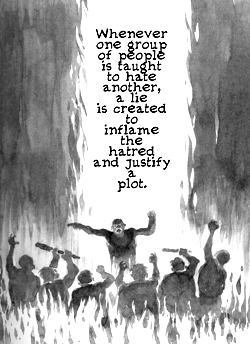 I will also and continually recommend Stuck Rubber Baby by Howard Cruse. Aside from being a beautiful and engrossing story, it illuminates what I consider to be a most important truth — that we fight best against hate when we fight together as allies.
I will also and continually recommend Stuck Rubber Baby by Howard Cruse. Aside from being a beautiful and engrossing story, it illuminates what I consider to be a most important truth — that we fight best against hate when we fight together as allies.
If you are afraid of other (but related) forms of hate infecting your loved one, you might consider the last book by the legendary Will Eisner, The Plot. His co-author is Umberto Eco, so your recipient will feel flattered that you chose a gift with such a fine literary pedigree.
And for that Baby Boomer relative who thinks he’s still hip (but is, instead, growing more narrow-minded by the day), there is The Fifth Beatle by Vivek Tiwary, Andrew Robinson and Kyle Baker. It is so colorful and fun that it can be easy to overlook how masterfully it protests homophobia and anti-Semitism.
Once you start looking for gifts like these, I’m sure you’ll find a lot of other things that will open hearts and minds. Please feel free to share them in the comments. We all need more and more and more.

